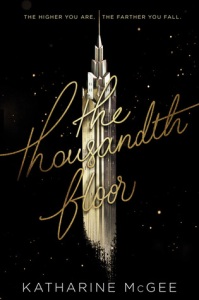Read a review of Egan’s fantastic novel Look at Me here: http://wp.me/p6N6mT-c2

“The castle was falling apart but…looked solid as hell: two round towers with an arch between them and across that arch was an iron gate that looked as if it had not been moved in three hundred years. The towers had indentations around the top that little kids put on castles when they draw them. The walls were twenty-feet high, jagged and crumbling…the walls looked silver under the moon, stretched out over the hill in a wobbly oval the size of a football field. The castle itself was a…clump of buildings and towers jumbled together. But the tallest tower stood off on its own, narrow and square with a red light shining in a window near the top.” 3-7
The Keep is novel that is truly wonderful to read, but because it takes a non-linear, experimental approach to story-telling, it presents a challenge to describe for potential readers. While on its surface this book is a story about a castle, situated in some indistinct corner of Eastern Europe, and some of the people who travel there; underneath Egan is telling a series of internal stories within stories within stories that sometimes intersect at the castle in transformative ways, and sometimes only intersect with the castle for the briefest of moments. Although it is true that the author ties the lives — sometimes past, sometimes present, and sometimes future — of the characters together before the close of the novel, her path there is circuitous and complex.
The story’s narration also proves to be a fluid element of the story: with first one primary narrator being pre-empted by another and then by a third narrator, each of which expands the story outward layer by layer, almost like nesting dolls. Each of these narrators helps to fill in the picture of the castle and the events that take place there, but their individual connection to one another is not revealed until the ending chapters of the book. As a result, the stories that the three narrators tell — to readers, and to one another — paint a very three dimensional picture of the castle and its Keep, both as it has been over the centuries, and as it exists in the present day.
At the start of the book, the core story is that of Danny — a New Yorker who has spent his life running from the past and hiding from aging — whose life is threatened by a shady deal gone wrong so he accepts the bizarre offer from an estranged cousin, Howard, to travel to Eastern Europe to visit a castle Howard is renovating. Upon his arrival at the castle, Danny finds it harder and harder to keep out the past and to keep control of what he calls “the worm.”
“The worm was a word Danny and his friends had invented all those years ago to call those things that happened when people lost confidence and got phony, anxious, weird. Was it paranoia? Low self-esteem? Insecurity? Panic? Those words were all too flat. The Worm was three-dimensional, it crawled inside a person and started to eat until everything collapsed, their whole lives.” 10
The castle begins to tug at Danny, distorting his sense of reality. Steeped in so much history — twelve centuries of it — what is happening in the present day becomes blurry and the past rushes in to fill the space. Without his connection to the rest of the world — no phones, no Internet, no communication with the present — New York Danny ceases to exist and the facade Danny has so artfully crafted for himself begins to crumble.
Danny is not the only one who the castle is transforming. The entire work crew there with Howard feels its pull. Soon Howard’s vision of creating a hotel fades and he becomes determined to protect its spooky, blurry atmosphere: he will a create a place where visitors come not to be entertained, but to live for a while inside their imaginations.
In an attempt to discover as many secrets about the castle as possible, Howard calls on Danny to unearth them by befriending the elderly woman illegally inhabiting the Keep, The Baroness, whose family has lived in the castle for nine hundred years. Danny agrees but soon it becomes clear the stories the Baroness has shared with him will be to the detriment of the project, not its benefit.
Here the story shifts to Ray, another narrator, who appears to be writing the story of Danny, Howard, and the Keep from his prison cell somewhere in America. His stories fill in some other details of the Castle, the Baroness, the Keep, and Howard’s project. How Ray is connected remains vague until the end of the novel, but his insights round out the story being told. Soon, Ray and Danny are telling simultaneous but competing stories to the reader.
Finally, our third narrator, Holly, enters the story. A creative writing instructor working in the prison and the woman who is reading Ray’s story of the Keep. It is with Holly that the full story of the castle — and of Howard, Danny, the Baroness, and the others — is brought to completion. It is also with Holly that the future of the castle is revealed, when she is moved to journey to Eastern Europe to find out whether the words of an unreliable, incarcerated man — words that moved her in inexplicable ways– will prove to be real.
Is The Keep a ghost story? A love story? A redemption story? It is all of those, but also many other things. It is a story that shows us how one person’s story can connect them to another person — perhaps in a completely different place and time — and then, upon retelling, connects to another person, and so on, rippling outward. Stories of the Keep travel across time and space, changing the lives of each person whose hears them. The Baroness’ story is of the castle distant past; Ray and Danny’s stories tell of the castle’s recent past; Howard and Holly’s stories are that of the castle’s present and future. A curious, winding, and challenging read, but without a doubt, a remarkable one.










